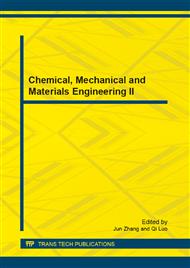p.84
p.90
p.96
p.102
p.107
p.115
p.121
p.127
p.134
Improvement of Surface Figure in the Polyurethane Pad Continuous Polishing Process
Abstract:
Primary factors determining surface figure of optics, including the velocity and pressure distributions, have been analyzed and improving methods provided accordingly for the pad continuous polishing (CP). With a septum on the exterior of the workpiece pre-pressing the pad, the inevitable depression on the edge of the workpiece incurred by the elastic response of the pad has been relieved obviously. By introducing the driving wheel system, the rotation speed of the septum & workpiece can be regulated and adjusted to that of the lap/pad, which produces a uniform velocity distribution on the polishing surface. Diamond conditioners with ring & disk patterns are employed to planarize the annular polyurethane pad and hence uniformise the pressure distribution on the workpiece/pad interface. Polishing experiments (Fused silica flat, 320 mm in diameter x 30 mm thick) conducted on the typical CP machine have demonstrated advantages of these methods.
Info:
Periodical:
Pages:
107-112
Citation:
Online since:
May 2013
Authors:
Price:
Сopyright:
© 2013 Trans Tech Publications Ltd. All Rights Reserved
Share:
Citation:


